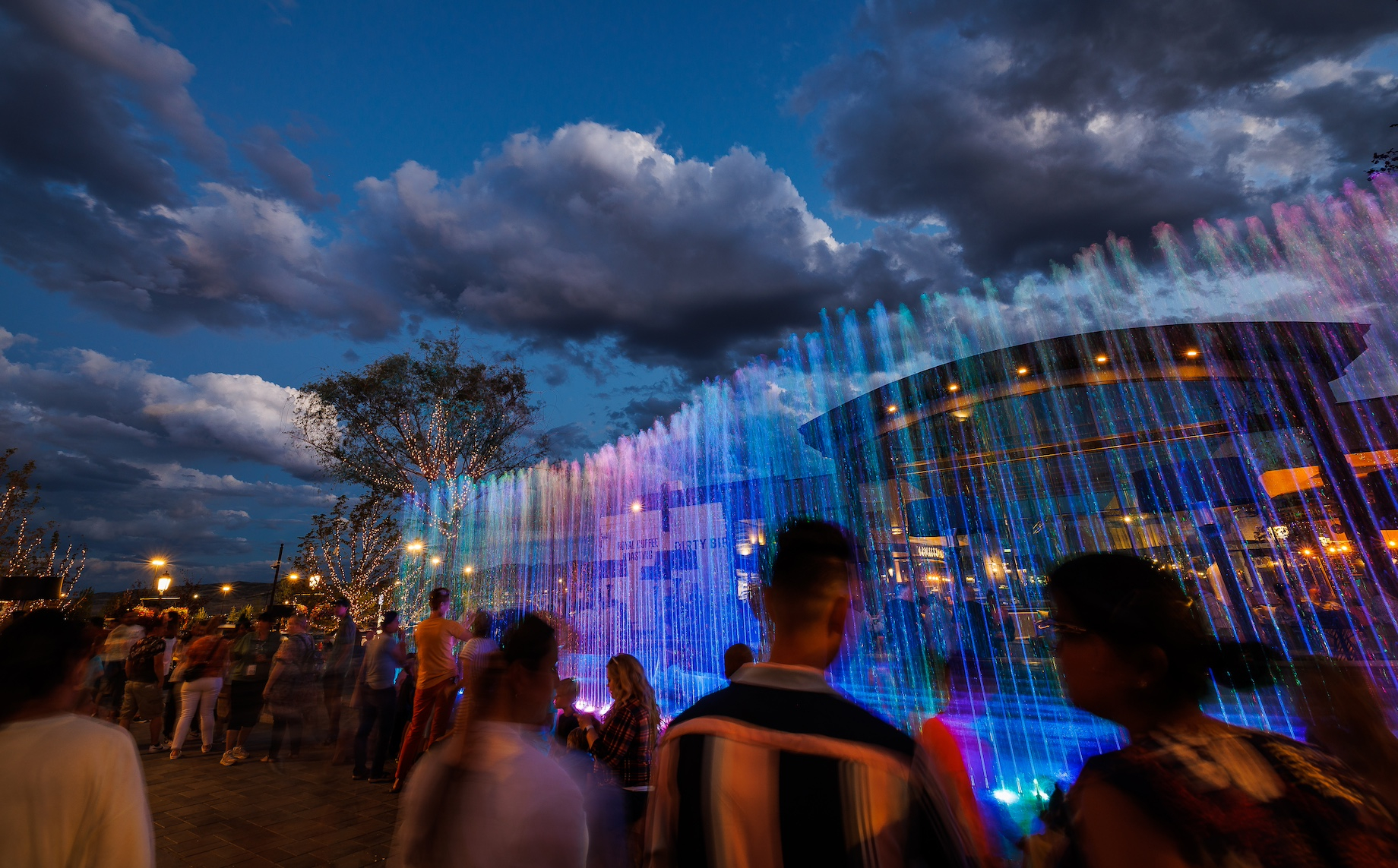Outside the Lines — which constructs water features and rock features, among others — is using an artificial intelligence system to bring water to life, reacting to visitors’ movements as they stroll past. Commerce + Communities Today contributing editor Joel Groover talked with OTL CEO Wick Zimmerman about the technology, as well as AI’s potential to change the customer experience at physical marketplaces.

Wick Zimmerman
How did you teach the AI what to do?
It took a lot of training data, combined with object recognition. Machine learning allows the system — which we’ve named Aquarius Interactive, a play on “AI” and our work with water — to recognize users’ motion, position and presence. We patented the system last February. This was my first foray into AI. The speed with which you can teach it to do something was really impressive. Somebody would hold a pose, and then you would tell the AI: “This is left arm up” or what have you. Within two minutes, it was 95% accurate. The longer you interacted with it, the more accurate it got.
What made you think about doing this with water features?
There have been these systems where you could be a conductor, so to speak, of a fountain, but you had to have this wand in your hand, stand in a particular spot and kind of receive the experience. It was all staged. We wanted something more spontaneous: You walk by the fountain and all of a sudden, the water ramps up or maybe it follows you or when you stop, it stops. The basic idea was to translate the movements that people make with their arms or bodies into the movements of the water. We didn’t want just a series of canned actions. We wanted the system to be able to understand and react in real time. We realized that AI was the best solution for that. AI can do things like follow you, chase you or go in the opposite direction of where you’re going. If you raise your arms or engage in any kind of conducting motion, it will respond. It can also, for instance, activate fog or lights or change light colors or patterns, based on your movements. Our system is even able to detect whether the person is an adult or a child, and it can do things like track how long they’re at the fountain or whether they’re participating actively or passively.
Does Aquarius Interactive work only for new fountains?
Installing this system on existing fountains is very doable. It works on any [Digital Multiplex]-controlled equipment, which is a standard protocol for show water features and show lights. There’s a server, which most show fountains already have. The heaviest lift is just getting one or two cameras installed in locations that work. It’s great if they can be connected via ethernet cables because that really reduces the chance of there being a noticeable lag between someone’s movements and the movement of the water.

In January, Outside the Lines added its Aquarius Interactive artificial intelligence system, including two cameras, to an existing water feature at CenterCal Properties’ Mountain View Village in Riverton, Utah. AI allows the fountain to respond to visitors’ movements.
What else could AI supercharge?
The potential for AI to make entertainment components and in-store experiences more engaging is really interesting to me. Imagine kids running around the fountains at a splash pad installation. You could have AI activate the nozzles to create a maze: As a kid moves through the maze, it moves right along with them. You could have a constantly changing environment for them. They would love it. You can easily apply AI object recognition to lighting, as well. Somebody walks into a store, and maybe the lighting changes in response and leads them to a rack of clothing or something that is on sale. It could call attention to merchandise or a display that they might not otherwise have stumbled upon. There are a lot of ways that you could use this type of technology on the experiential side.
The data and analytics are another benefit. We’re capturing all of this anonymous but useful data. The owner of that retail center could say: “Hey, these are the times when there is the most activity near the fountain, this is the type of activity that we have and this is how long people are staying.” AI can recognize patterns that humans would not be able to recognize. Going forward, there’s going to be incredible power associated with that.